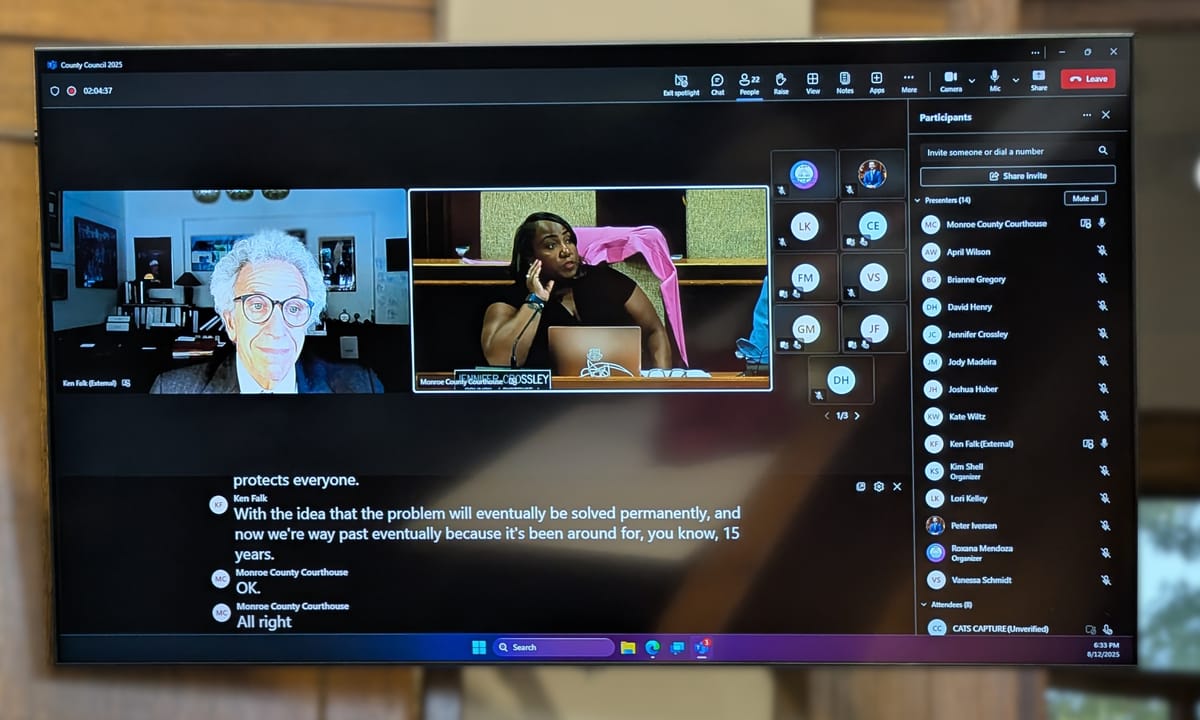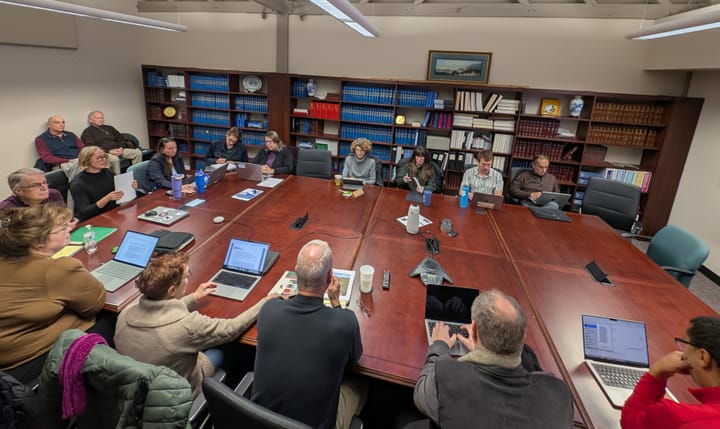ACLU presses Monroe County to move ahead on construction of new jail
As Monroe County’s plans to build a new jail face headwinds, the American Civil Liberties Union of Indiana is still pushing for the county to move forward with construction, according to remarks by attorney Ken Falk at the county council’s Tuesday meeting.


As Monroe County’s plans to build a new jail face headwinds, the American Civil Liberties Union of Indiana is still pushing for the county to move forward with construction, according to remarks by attorney Ken Falk at the county council’s Tuesday meeting.
Calls to repair or replace the county jail gained momentum in 2008, when the American Civil Liberties Union of Indiana filed a class-action lawsuit on behalf of people incarcerated at the jail, arguing that overcrowding had led to unconstitutional conditions for prisoners. The ACLU settled with the county in 2009, and the agreement has been extended several times. The most recent extension goes through the start of next year.
But for years, facing high costs, tough choices, and intense opposition from some residents, the county made little progress toward a new jail. Now, new limits on tax revenues from the state legislature have put the county’s construction plans in limbo, and some advocates say that the county should redistribute part of the project’s expected $225 million cost toward housing and social services instead.
The ACLU has stuck to its line, and at the county council’s meeting on Tuesday, Falk—who was the attorney who filed the lawsuit in 2008—once again made his case to replace the jail.
“Every year, while the county has moved towards building a new facility, I know that you have done other studies and surveys, and they all agree the jail is outdated,” Falk said. “It’s dangerous. It’s not a proper place to house people, whether it be 10 people or 100 people. It’s extremely staff intensive. There isn’t room, and it’s falling apart.”
Opponents of building a new jail have argued that a larger facility, which could include between 400 and 500 beds, might encourage the county to incarcerate more people. The average daily jail population has inched up toward 240 people a day in recent months—a count that’s still below its pre-pandemic daily average, which was around 290 people.
Falk argued that the county had to be realistic about the bottom-line number of beds it would need to house people who could not be diverted from jail. He pointed to the example of Vanderburgh County in southern Indiana, which opened its current jail in 2006 but recently embarked on a $30 million jail expansion because of overcrowding.
“I do not disagree that there should be alternatives,” Falk said, “but that does not in any way diminish the fact that you guys need a new jail.”
Falk added that the jail reaches capacity when 80% of beds are full. A higher population can make it impossible to separate inmates based on gender or other needs.
The current building also lacks amenities that would be found in modern jails, Falk said, citing a 2024 report commissioned by the county that found a shortage of medical facilities and program space.
The council’s exchange with Falk on Tuesday also turned on the decision to extend the settlement agreement—and what it will mean when that agreement expires.
Falk said that the county and the ACLU found it useful to extend the settlement because it sets a cap on the jail population. (The county jail must notify local officials when the population in its available security beds hits 244. At 248, it must notify the ACLU. When the population exceeds 258 for one full day or three times in a week, the county must transfer prisoners to out-of-county jails if possible.)
But, Falk said, the settlement “was not meant to be a permanent solution, obviously.”
Councilor Marty Hawk pointed out that the expiration of the settlement wouldn’t trigger immediate consequences for the county. “It doesn’t say that we’re going to immediately get sued or something if we haven’t built a new jail,” Hawk said. “It just says that this will no longer be in effect.”
Hawk added that the agreement’s expiration would not result in a command from the federal government to build a new jail—an outcome that could only arise from a settlement, not a court order.
Falk said that the end of the agreement could open the door for a second ACLU lawsuit.
“The advantage of the private settlement agreement is that it protects you from new litigation—because at this point, we represent every prisoner in the jail, and they can’t file a new lawsuit,” Falk said. “If the private settlement goes away, there’s nothing to stop either the ACLU or anyone else from filing a new case, saying we want a judge to find the concurrent conditions are unconstitutional.”
“It protects everyone with the idea that the problem will eventually be solved permanently, and now we’re way past ‘eventually,’ because it’s been around for 15 years,” Falk added.
Progress on plans to build a new jail has receded further into the distance under a new state law, Senate Enrolled Act 1, which limits what percentage of local income tax revenue counties can spend on interest for bonds.
The county council and commissioners spent a few recent meetings drafting a letter asking legislators to reconsider the new tax limits. But, facing pessimism about the prospects of their appeal and calls to rethink the scope of the jail project, county lawmakers ultimately decided to scrap the letter at a joint meeting last week.
Instead, the council and commissioners said last week that they will focus on adjusting to a lower budget—or finding alternative ways to raise revenue.
Meanwhile, the county council has yet to schedule a meeting to review schematic designs for the jail.
The schematics were originally set to be presented at the end of May, but the county was forced to make extensive changes to the plans as the projected cost of the original designs rose far beyond its budget. Lawmakers penciled in the week of Aug. 19 as the new date to review schematics, but so far, no meeting is on the calendar. It now looks very unlikely that Aug. 19 will be a date when schematics are presented publicly.
County council president Jennifer Crossley told The B Square that she does not yet know when the county councilors will review the schematics—especially now that the start of 2026 budget season has added six new work sessions to their schedule.




Comments ()